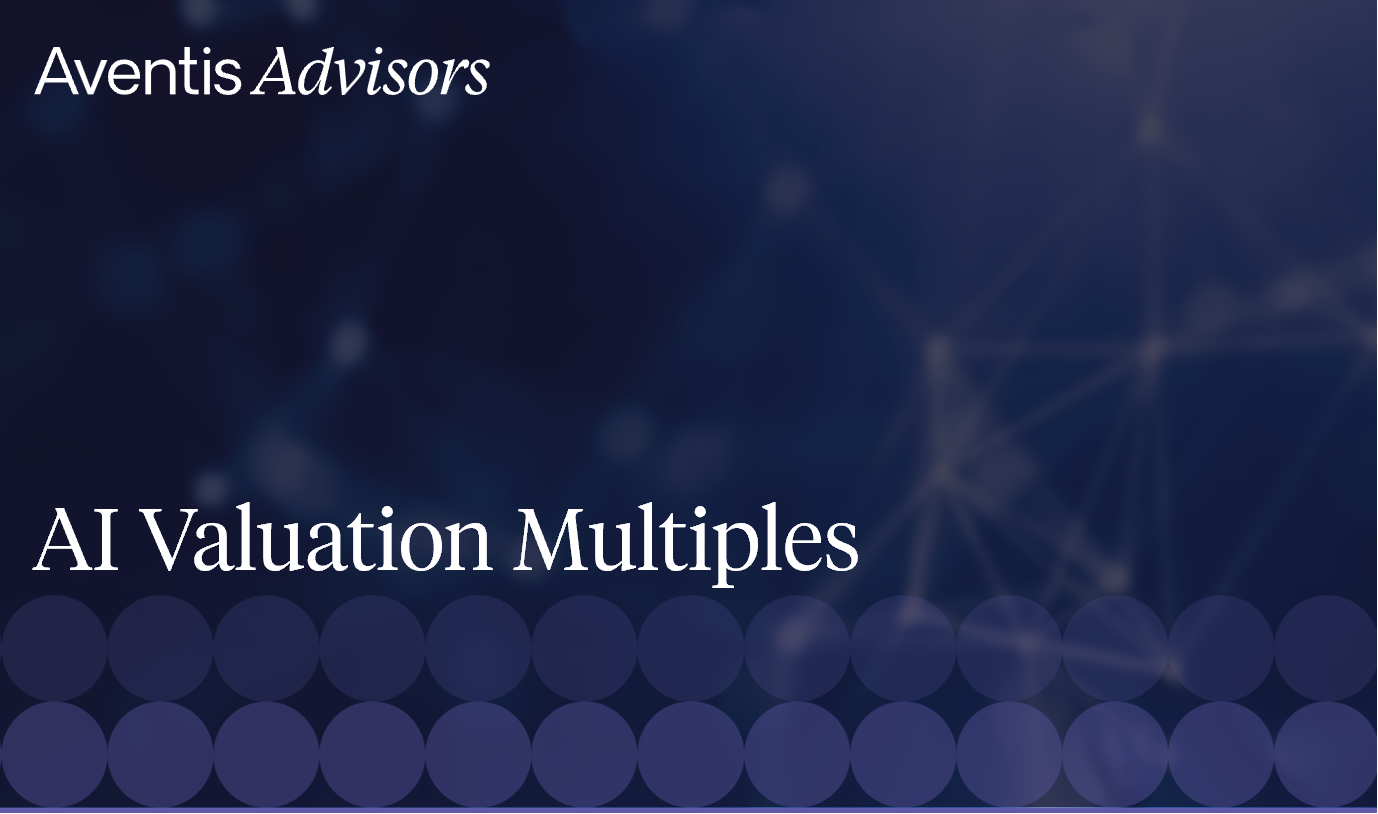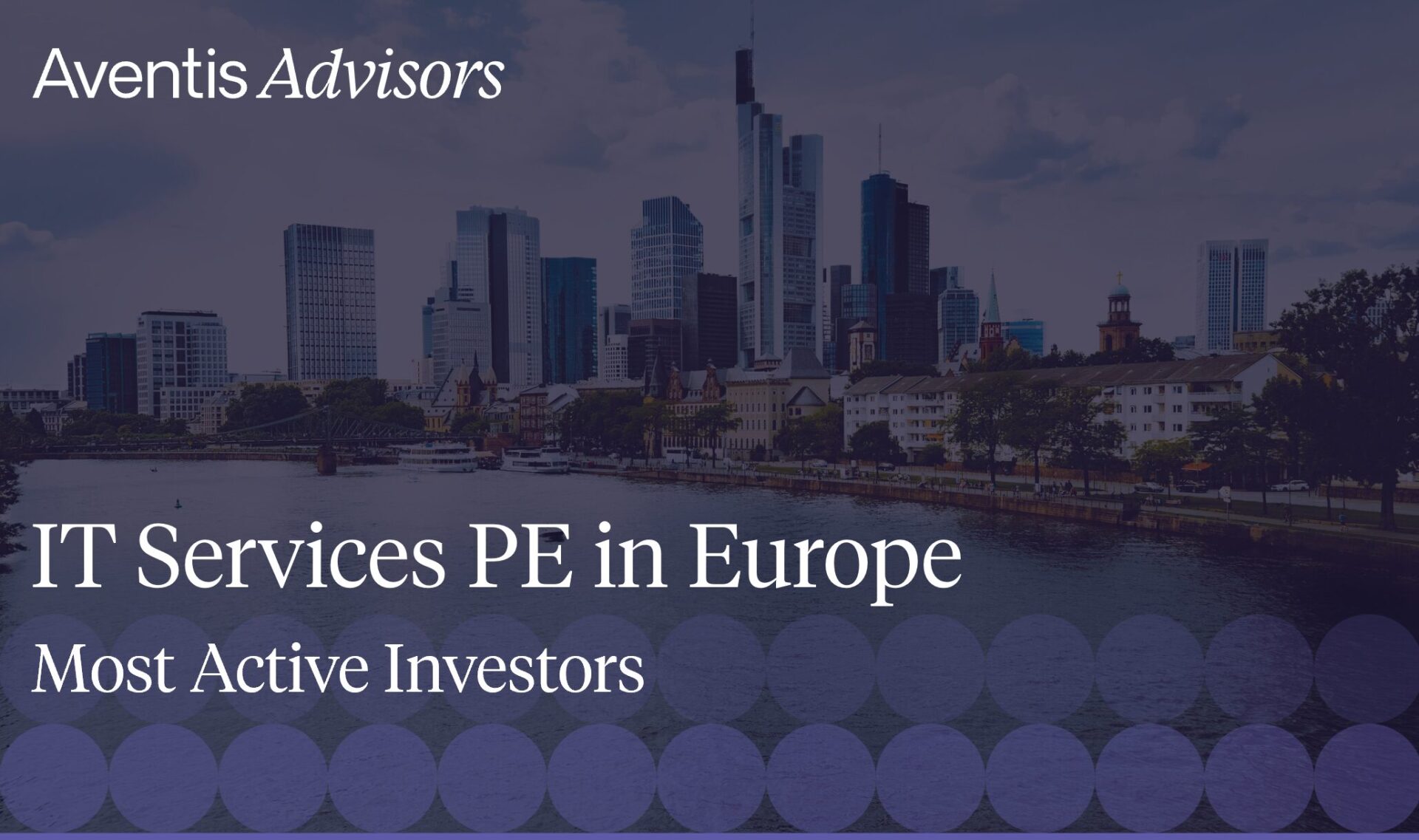The AI M&A landscape in 2025 is evolving rapidly. As investor interest surges and competition intensifies, acquirers are rethinking how they evaluate value in AI-related companies. Increasingly, it is not just the tech stack or revenue that drives deals, but the talent.
In today’s artificial intelligence sector, the ability to build, adapt, and deploy cutting-edge AI tools matters more than ever. Strategic buyers are prioritizing compact, high-performing teams capable of scaling AI capabilities, integrating machine learning models, and developing generative AI tools with real-world traction. These companies often operate below the radar: lean, technical, and laser-focused on solving difficult problems.
“Buyers are increasingly focused on the team and what they can do,” says Filip Drazdou, M&A Director at Aventis Advisors. “Technology changes so fast that buyers want people who can adapt quickly and reinvent both themselves and their products in a new environment.”
This shift reflects broader trends in mergers and acquisitions, where traditional indicators such as financial reports, headcount, or private equity multiples are being reassessed. Instead, diligence processes now center around intellectual property, real-time data analysis, and a team’s ability to develop tailored solutions that offer a competitive edge.
Why now: urgency in the AI M&A surge
This talent-focused approach reflects a broader urgency. According to Dentons, 64% of business leaders plan to use M&A to bolster their AI capabilities within the next 12 months, with this figure expected to rise to 70% over the next three years. Simultaneously, Precedence Research reports that the global AI market size is expected to grow from about $638 billion in 2024 to around $3.68 trillion by 2034, at a compound annual growth rate (CAGR) of approximately 19.2%. Together, these figures underscore a critical pivot in global M&A dynamics, one that places premium value on fast-moving, execution-focused AI teams [1] [2].
Strategic vs. private equity buyers: diverging playbooks
While strategic buyers prioritize compact engineering teams with deep product velocity, private equity acquirers are increasingly focused on IP maturity and integration readiness. The former often look for cultural and technical alignment with existing R&D units. The latter prioritize scalability, revenue leverage, and clean cap tables. Both, however, are aligned in seeking AI acquisitions that deliver defensible, production-ready technology with high-impact outcomes.
In this article, we explore why strategic acquirers are betting on talent over scale, how they assess potential in the AI sector, and what startups can do to position themselves for acquisition, especially in an environment shaped by the AI Act, new compliance expectations, and an expanding global appetite for value creation through AI-powered tools.
Note: North American regulators are also catching up. In Canada, the Artificial Intelligence and Data Act (AIDA) is expected to influence due diligence workflows by late 2025, particularly around data traceability and auditability.
Table of Contents
- What’s driving AI M&A in 2025
- From AI tools to technical teams
- Case Study: AMD and BRIUM in the Generative AI Race
- Why small AI teams lead AI M&A outcomes in 2025
- About Aventis Advisors
What’s driving AI M&A in 2025
The AI M&A landscape has shifted from chasing buzzwords to targeting execution. In 2025, strategic buyers are zeroing in on compact teams that offer real, deployable AI capabilities, especially those tied to generative AI, predictive analytics, and advanced natural language processing. As market expectations mature, so do the requirements for acquiring businesses in the AI sector.
From AI hype to acquisition-ready capabilities
In previous M&A cycles, acquisitions were often driven by investor sentiment and the perceived promise of AI technologies. Today’s buyers are far more pragmatic. They want proof: AI tools that work in production, that integrate with existing platforms, and that provide leverage in decision-making, automation, or product scalability.
Key capabilities in demand include real-time data analysis, low-latency model inference, and solutions built to handle complex AI algorithms. Companies that offer these through compact, focused teams, often with fewer than 50 employees, are commanding outsized interest and valuations. What matters is not the size of the team, but its ability to ship and iterate under pressure.
This approach is especially attractive when scaling AI-powered tools into enterprise environments. Buyers are no longer looking for polished demos. They are hunting for modular, high-impact codebases that accelerate product development and integration. These capabilities often sit deep within the AI systems that small teams have built, refined, and validated internally.
How the AI Act and market forces are shaping mergers and acquisitions
At the same time, regulatory scrutiny has increased. The implementation of the AI Act in Europe, alongside stricter data governance standards globally, means that acquirers are now factoring compliance, risk assessment, and intellectual property hygiene directly into their sourcing and due diligence processes.
This affects who gets acquired. Startups with strong internal processes, including auditable model training, documentation, and transparent data sourcing, have a significant advantage. Tools that offer automated data extraction, and secure integration with virtual data rooms also streamline M&A workflows and demonstrate operational readiness.
In this environment, buyers seek not only talent and technology but also assurance that the target company will hold up under legal scrutiny, can pass internal financial analysis, and will not trigger concerns from regulators or tax authorities. As a result, the bar for technical diligence and post-acquisition integration is higher than ever.
From AI tools to technical teams
In 2025, strategic acquirers are no longer buying AI just for the tools; they are buying for the people who build them. A sleek interface or clever demo is not enough. Buyers want access to lean, execution-ready teams that can operate across the full lifecycle of AI systems, from algorithm development to product integration.
Why Talent Density Beats Team Size
The most sought-after teams are compact but highly technical. They excel at building AI-powered tools that solve bottlenecks in real-world workflows, automate repetitive tasks, enable fast data analysis, and deploy models at scale in edge environments. These are not research labs. They are product engineering units with tight feedback loops and real infrastructure awareness.
Buyers assess this through several lenses:
For acquirers, these traits signal not just skill, but adaptability. In a world where AI technologies evolve monthly, teams that can reinvent both their products and their methods hold greater long-term value.
Team-Led IP and the Rise of Execution-Centric Acquisitions
What makes many of these acquisitions attractive is that the intellectual property is not just software. It is embedded in the team’s decision-making patterns and execution habits. Small, experienced groups often build more efficient abstractions, faster inference engines, or optimized training pipelines. Not because they are overfunded, but because they have had to prioritize performance under tight constraints.
This is where leading acquirers now focus: matching top talent with the highest-value product opportunities. As McKinsey noted in earlier research, “Fast talent reallocators were 2.2 times more likely to outperform their competitors on total returns to shareholders.” While that analysis predates the current AI wave, its core principle applies more than ever. In lean AI startups, fast reallocation happens instinctively. Engineering focus shifts fluidly toward bottlenecks, benchmarks, or integration hurdles with immediate effect [3].
Strategic buyers are not just buying people; they are allocating capability to initiatives that will define their AI competitiveness. That is why these acquisitions often skip drawn-out rollouts and move directly to integration. The goal is to place high-leverage talent into key AI systems, whether generative AI pipelines, natural language platforms, or enterprise automation suites, and accelerate impact from day one.
Case study: AMD and BRIUM in the Generative AI race
When AMD acquired BRIUM, the goal was not market share. It was technical leverage. BRIUM had quietly solved one of the most difficult problems in generative AI: deploying foundation models with minimal latency in real-world environments.
The team specialized in high-performance infrastructure. Their tools streamlined inference pipelines and reduced deployment delays. These capabilities were especially important in latency-sensitive industries such as finance and cybersecurity, where every millisecond affects outcomes.
This was not a revenue-driven acquisition. AMD was securing execution. BRIUM’s engineers delivered optimized data flows, multi-model orchestration, and a modular architecture that fit cleanly into AMD’s systems. Unlike many acquisitions that experience delays during post-merger integration, this one advanced quickly and smoothly.
Anush Elangovan, AMD’s Corporate Vice President of Software Development, emphasized BRIUM’s value: “The major advantage AMD sees with Brium is the startup’s ability to optimize the entire inference stack before the model reaches the hardware. This reduces dependence on specific hardware configurations and enables faster, more efficient out-of-the-box AI performance across a wide range of deployments.” [4].
This acquisition reflects a broader shift in M&A behavior in 2025. Buyers are no longer waiting for startups to reach scale. Instead, they are focusing on engineering strength, product velocity, and a demonstrated ability to deliver.
For founders, the message is clear. You do not need to be large to be valuable. What matters is precision, speed, and technical excellence. That is what captures attention. And that is what leads to acquisition.
Why small AI teams lead AI M&A outcomes in 2025
Across the AI sector, the highest-performing companies aren’t always the largest. In fact, many of the most valuable acquisitions in 2025 involve teams with fewer than 30 engineers. These teams are moving faster, building smarter, and solving harder problems than their more heavily resourced competitors.
High Output with Focused Teams
Small AI teams often bring an intensity and clarity of focus that larger organizations struggle to maintain. With less bureaucracy and tighter feedback loops, they can move from concept to deployment quickly. They optimize for execution, not scale, and it shows in the way they ship infrastructure, not just demos.
Such an efficiency-first mindset aligns with a broader trend among AI-native startups As Bloomberg reported, “A growing cohort of ‘AI-native’ startups, companies built from the beginning with AI tools and automation, are taking pride in keeping headcount low while scaling rapidly.” These companies prioritize adaptability and tool integration over traditional team expansion, allowing them to move faster and operate more efficiently than their larger, more hierarchical competitors [5].
From R&D to Revenue Faster
Speed matters in AI. Markets change fast, and so do the models. Smaller companies are winning deals and acquisitions because they don’t wait for permission to innovate. They run their own benchmarks, test new training strategies, and deploy systems that integrate directly into customer environments.
That level of agility offers particular value to acquirers. Large companies need teams that can not only build but adapt – especially as new regulations like the AI Act reshape the compliance landscape. Startups that build with integration, documentation, and legal readiness in mind are easier to acquire and quicker to scale post-acquisition.
Modular Architecture as an Advantage
Another reason these teams stand out is architecture. Many build their software in modular layers that can plug into existing systems without extensive rewrites. APIs are well-structured. Pipelines are clean. Data management is secure.
It matters because post-merger integration is a common point of failure. A small team with a clean architecture and a mature approach to data governance is a better fit than a bloated org with technical debt. It also sends the right signals to acquirers who are weighing not just product quality but ease of integration.
About Aventis Advisors
Aventis Advisors is an M&A advisor focusing on technology and growth companies. We believe the world would be better off with fewer (but better quality) M&A deals done at the right moment for a company and its owners. Our goal is to provide honest, insight-driven advice, clearly laying out all the options for our clients – including the one to keep the status quo.
Curious how your AI team measures up in today’s M&A market? Reach out for a confidential valuation.




